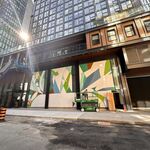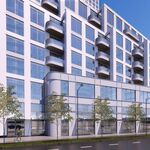Allowing cars to bypass streetcars doesn't help congestion, it makes it worse by putting cars in front of the streetcar at the next traffic signal. That means slower streetcar service and faster driving. And that in turn means less streetcar ridership and more car traffic. Which in turn results in slower driving, so nobody wins.
The stops at minor streets have no effect on roadway capacity since those intersections are not the limiting factor in a road's capacity. The ones which do reduce capacity for cars are the ones at major arterials, which are also the ones which cannot be skipped since they are the transfer points to other routes.
We should definitely continue to remove closely spaced stops, but the rationale needs to be to speed up streetcars, not speed up motor traffic. Focusing on the latter is a recipe for totally screwing up all of the transport networks. Central Toronto is way beyond the population density at which focusing on fast motor traffic is a viable transport strategy.
One possible improvement for traffic flow is to change the setup for transit priority at major arterials during peak periods.
Currently it extends green lights while streetcars are sitting at the nearside stop, in the hopes that the light is green when the streetcar is finished loading. A lot of this extra green time gets wasted since vehicles are stuck behind the streetcar and pedestrians already have a Don't Walk signal by that point.
An alternative could be to extend the green light as the streetcar approaches the nearside stop, to clear the traffic in front of the streetcar. As soon as the streetcar reaches the stop, the light would change to red, and there would be a minimum-duration phase for perpendicular traffic including pedestrians. The downside of this method is that streetcars would always need to be stopped for at least the minimum duration of that phase, which is around 30 seconds at downtown intersections. I think that the dwell time currently averages around 25 seconds at major stops so that could add a few seconds for streetcars with below-average dwell times. The question is whether that delay is more or less than the delay caused by motor traffic which currently blocks their access to the stop. Another advantage of this setup is that it provides a disproportionately large benefit to the streetcars with longer dwell times, which are also the ones with longer headways. So that should help even out service. The current system penalizes streetcars with unusually long dwell times since they miss the green provided by the priority system since that green is timed based on an assumed dwell time.




